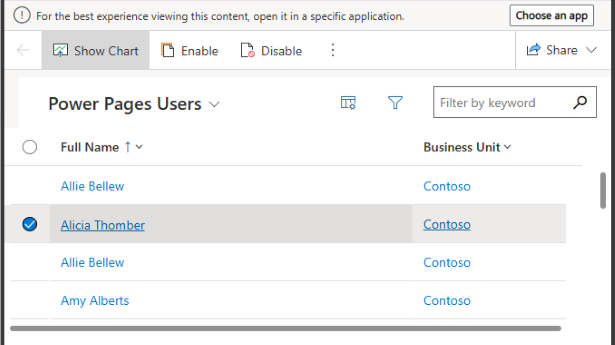Power Pages just took an important step toward tighter platform integration and better enterprise-grade capability.
In the 2025 Wave 2 release plans, Microsoft is introducing a change that aligns Web Roles in Power Pages with Dataverse Security Roles for users authenticated via Microsoft Entra ID (formerly Azure AD). This means that when users make updates through Power Pages, their real identity can now carry through into Dataverse — improving audit history, record security, and ownership logic.
Why this matters
Up until now, actions taken through Power Pages were recorded in Dataverse as being performed by “System.” This made it difficult to:
- Trace updates to the actual user
- Apply security or workflows based on user identity
- Rely on out-of-the-box audit history for compliance or governance
With this change, users who authenticate via Entra ID and access Power Pages will:
- Execute Dataverse actions under their own name
- Trigger plugins, flows, and auditing as themselves
- Inherit Dataverse security roles tied to their Power Pages Web Role
It’s a foundational shift that brings Power Pages closer to the behavior we expect from Model-Driven Apps — and gives architects more confidence in designing secure, scalable solutions.
Use cases unlocked
This update unlocks significant new options for solution design, including:
- Accurate auditing of who made each change, without custom dev
- Role-based access enforcement directly from Dataverse security roles
- More meaningful trigger conditions in Power Automate and plugins
- The ability to assign record ownership to the actual portal user
For clients working in sectors where compliance, visibility, and accountability matter, this could replace a range of previous workarounds.
What to watch for
At this stage, the documentation specifically mentions Entra ID-authenticated users, but doesn’t confirm whether this includes external guest users. That’s something to test once the feature is released — and will be important for partner and citizen-facing portals.
Either way, the direction of travel is clear: Microsoft is continuing to tighten the integration between Power Pages and core Power Platform capabilities, reducing friction between portal access and secure backend data operations.
Final thoughts
From a solution architecture perspective, this change reflects a maturity shift in Power Pages — one that acknowledges the importance of unified identity, not just authentication.
It also signals that Power Pages is continuing to evolve beyond “just a portal” — toward a fully integrated, secure, and auditable front door to enterprise data.


Leave a Reply